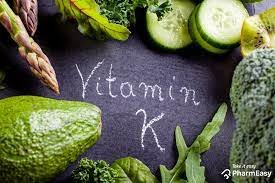Key Nutrients for Bone Health
November is Osteoporosis awareness and falls prevention month. Earlier we discussed what osteoporosis is, what normal bone loss can be, and risk factors for low bone density. This second part will discuss key nutrients that help prevent or minimize bone loss, and how to know if you’re getting enough for you.
This article was also provided by Naturopathic Dr Ceilidh (pronounced Kayley) Flanagan
Key Nutrients for Bone Health:
Calcium: Provides structure to the bones and teeth (check out the chart and calcium calculator below to see if you are getting enough!)
Food Sources – Canned fish with bones (e.g., salmon, sardines), chia seeds, dairy products (e.g., cheeses, milk, yogurt), fortified foods (e.g., orange juice, tofu), leafy greens (e.g., bok choy, kale, turnip greens)
Magnesium: Supports bone structure and development
Food Sources - Nuts and seeds (e.g., almonds, cashews, chia seeds, pumpkin seeds), legumes (e.g., black beans, peanuts, soy products), potatoes, spinach
Vitamin D: Promotes calcium absorption from intestines, is required for bone growth and remodeling, produced in the skin from sunlight exposure
Food Sources - Beef liver, certain fish (e.g., salmon, sardines, trout, tuna), eggs, fortified foods (e.g., milk, non-dairy beverages), mushrooms
Vitamin K: Assists bone and cartilage mineralization, can be produced by our good gut bacteria
Food Sources - Green vegetables (e.g., broccoli, collards, kale, okra, spinach), soy products (e.g., edamame, natto), pumpkin
Protein: gives bone its strength and flexibility and is also the big component of muscles, which are, of course, crucial for mobility and in preventing falls.
Food Sources – poultry, fish, meat, eggs, legumes, tofu, nuts and seeds, dairy
Minimum Daily Calcium Requirements (including diet and supplements)
Age: 19-50 - 1000mg
Age: 50+ - 1200mg
Calcium Calculator: https://osteoporosis.ca/calcium-calculator/
The goal with these dietary and lifestyle measures is to prevent the development of age-related conditions like osteopenia and sarcopenia. Osteopenia is the precursor to osteoporosis – when bone density is lower than normal, but not quite low enough for a diagnosis of osteoporosis. Sarcopenia is the decline in muscle mass associated with aging. Muscles are not only responsible for moving our bones, but also protecting them from outside forces. This is why resistance exercise is so important! Since muscles undergo a similar natural decline as bones with age, the more muscle mass we have to start with, the more we are protected from these deteriorating conditions.
You may be wondering - how do I know my bone density? Bone Mineral Density Scans (such as DEXAs) use X-rays to measure the composition of bone, typically in your hip and spine. If you are over the age of 65, you should absolutely undergo bone density testing. Postmenopausal women (regardless of age) and younger adults with any of the causes/risk factors outlined above should have also have bone density testing done. In Ontario, those who are considered higher risk for osteoporosis are covered for annual bone density scans. Those in the low-risk category are covered for a baseline test and a follow-up test at least 36 months after.
If you are concerned about your bone density, or if you just want to help prevent the development of osteoporosis, come talk to the health professionals at ProActive Centre. It is our goal to get you moving and feeling your best, and help you achieve optimal health for years to come!
References:
Osteoporosis Canada - https://osteoporosis.ca/
National Institutes of Health:
- https://www.niams.nih.gov/health-topics/bone-health-and-osteoporosis
- https://ods.od.nih.gov/factsheets/Calcium-HealthProfessional/
- https://ods.od.nih.gov/factsheets/vitaminK-HealthProfessional/
- https://ods.od.nih.gov/factsheets/Magnesium-HealthProfessional/
- https://ods.od.nih.gov/factsheets/VitaminD-HealthProfessional/
Papaioannou A, Morin S, Cheung AM, et al. 2010 clinical practice guidelines for the diagnosis and management of osteoporosis in Canada: summary. CMAJ. 2010;182(17):1864-1873. doi:10.1503/cmaj.100771





